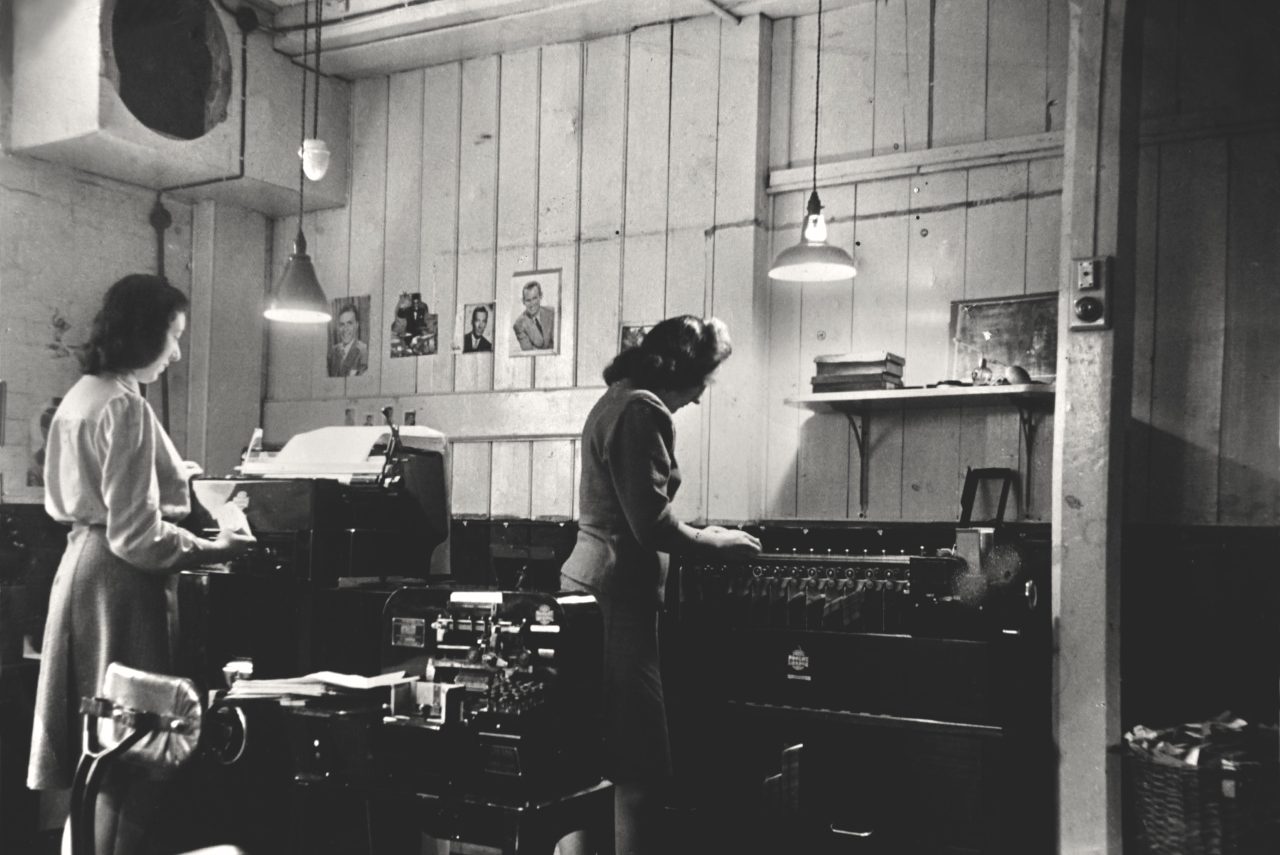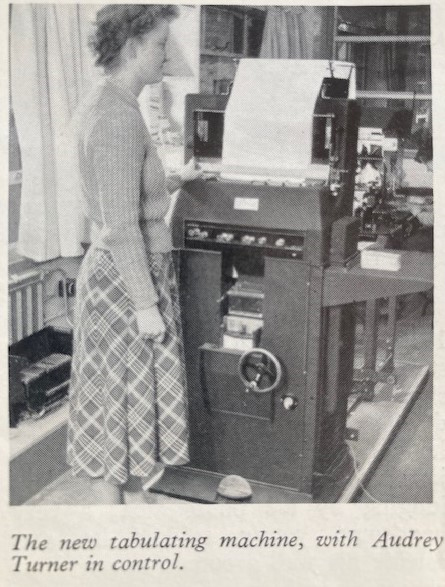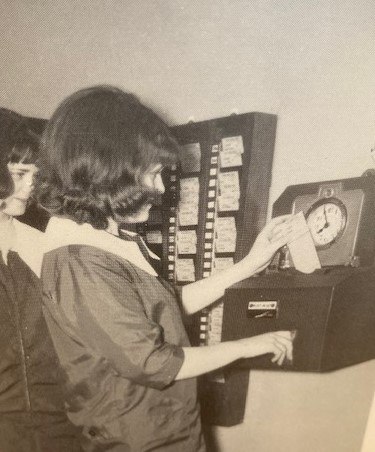There were very old machines, so you put your card in, pressed a lever and it punched it, printed the time in blue ink when you came in. The cards were collected each week – everybody’s wages were calculated from that. I suspect some people used to clock in for other people, but that’s the way it was calculated.
[Tim, Morlands]
And of course, if an employee had been on piecework for four hours, on repairs for two hours, training or buttonholing or something else to make up the eight hours for the day, we’d have to make sure that those hours totalled up and that they matched the clocking in and clocking out of the clocking card.
[Rosa, Morlands]

Photo: Sue Ford and Bev Coggins
The junior in the office used to go round and collect all the clocking in cards on a Friday night or if he worked on a Saturday sometimes. If there was somebody worked over or something, you had to work out each one and then they had to be checked by somebody else to make sure that they’d worked it out correctly.
[Gloria, Baily’s]
And the payslips had a little torn off, sort of cut off edge at the side, whereby the notes could be counted. So when the employee, the worker, got their wage packet, they could count the notes and initial that they had received the right amount of notes.
[Rosa, Morlands]

Photo: Morlands Magazine, Spring 1953
That was on piecework – we had to clean sixty skins an hour. To earn your money that’s what you had to do, or else you didn’t earn your money.
[Reg, Morlands]
Obviously, each worker had different allotted tasks. We had to know each task that the worker was working with. From a ledger, we had to check that a given item had been timed by the time-costers and then we could give that rate to whichever employee had done that particular code number. It didn’t matter if today was Mary and tomorrow was Jane – as long as it was the same code they all got the same pay.
[Rosa, Morlands]
Photo: Morlands Magazine, Summer 1965


